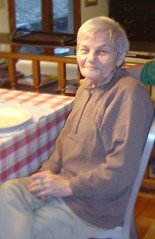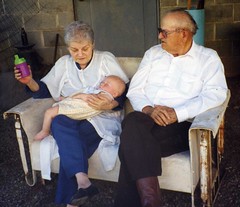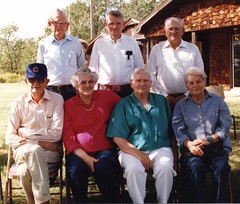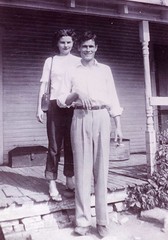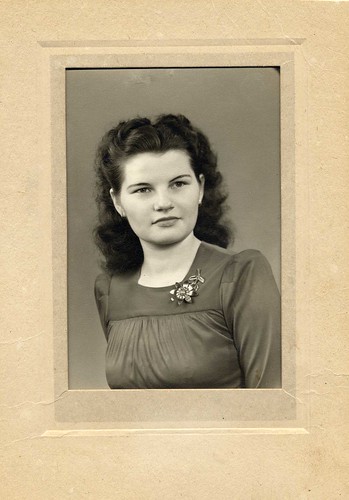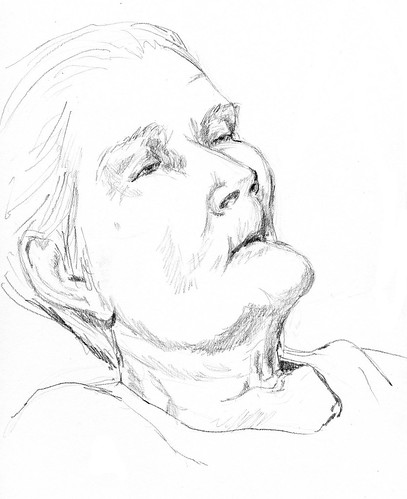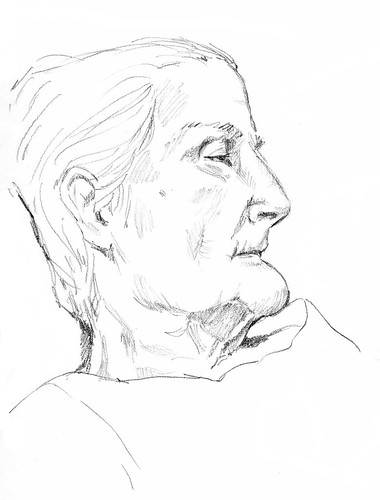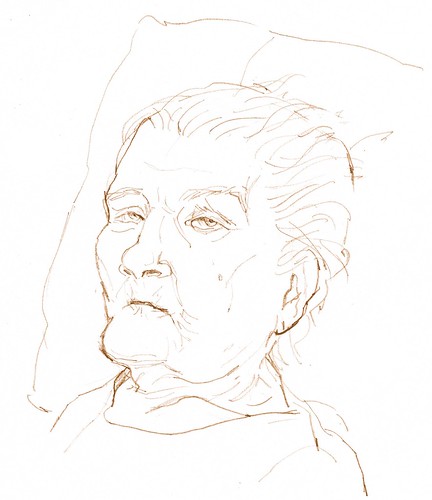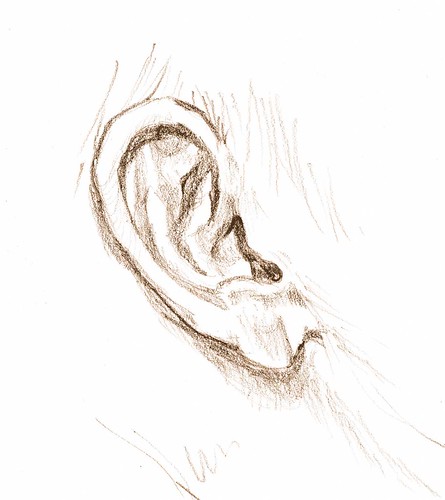
Every 2 weeks or so, Mom has a health crisis and I'm sure that she won't pull through. Somehow, she manages to make it, albeit weakened. At this point, she looks like a skeleton with a layer of skin, no muscle, no fat. She's gone through so many ups and downs. When she is feeling somewhat good, she smiles and speaks a fair amount. It's not a conversation really, but she
is communicating. She has a glazed look in her eyes now. A rather large bed sore has developed on her back, despite changing her position many times a day. Her skin is so tissue thin and fragile, it is extremely difficult to prevent the bed sores in her weakened state.
Today there is a timely article in the New York Times titled: "When Alzheimer's Steals the Mind, How Aggressively to Treat the Body?". Fortunately, I've reached the decision to treat any pain Mom has and not to take extreme measures to extend her life. Not an easy decision and many people would not take that path. This article addresses the process of making such a decision.
"''Am I sinning?'' he recalled asking himself, wondering whether it was right to stand by while patients suffered with pain and discomfort from tubes and other treatments.
''I went to medical school to alleviate suffering and I am causing suffering,'' Dr. Nelson said. ''When I die and hopefully go to heaven, God will ask me, 'Did you try everything possible?' I want to say I did.''
Last November, he introduced a position paper to his state medical society, which it passed unanimously, saying that tube feeding was not good medicine for end-stage dementia patients. He also counsels families. When Alzheimer's patients can no longer eat, Dr. Nelson said, ''My advice is to let the patient die peacefully.''
But, he added, few families are receptive, and some become angry. More often than not, the feeding tube goes in.
Dr. Nelson is an exception, Dr. Meier said. More often, she said, doctors tell a family that the patient will starve to death without a feeding tube, and pressure them to have it put in. Her own view, she said, is that ''families should be counseled that loss of an ability to eat and drink is a sign that the patient has entered the terminal phase of the illness'' and the focus should be on palliative care."
When Alzheimer's Steals the Mind, How Aggressively to Treat the Body?
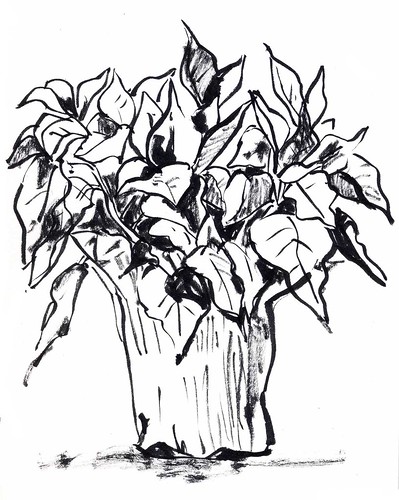
This is a drawing of a pretty bright red poinsettia that Mom has enjoyed looking at (I like to believe that she does). I used a fabulous ink cartridge brush made by Kuresake. I read about it a while ago on an animation blog and had to get one and can't live without it now. It's available on Amazon:
Kuretake Sumi Brush Pen
